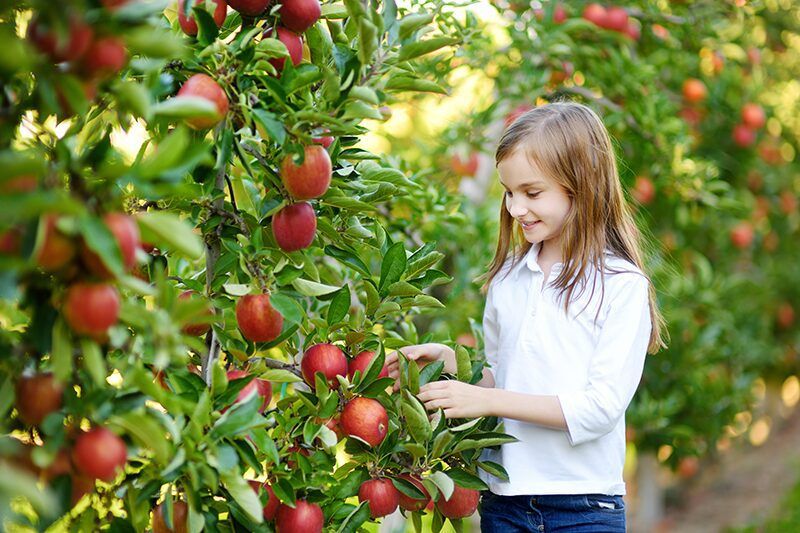Whether you’re a novice or an experienced gardener, planting bare root fruit trees is an easy way to add a splash of color and freshness to your landscape. This step-by-step guide for planting bare root fruit trees in your yard will have you reaping the rewards of a bountiful harvest in no time!
Benefits of Planting Bare Root Fruit Trees
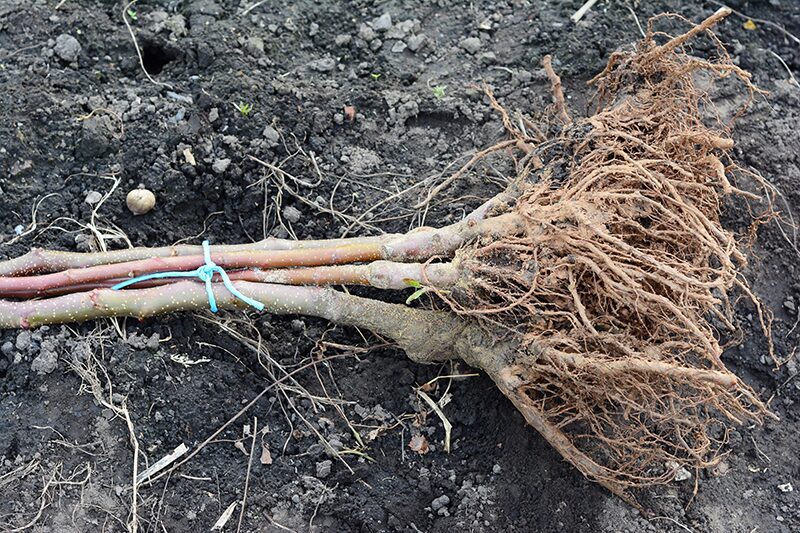
Before we get our hands dirty, let’s talk about why planting bare root fruit trees is the way to go. Firstly, these trees are more affordable than their potted counterparts, making it easier to expand your garden without breaking the bank. They also establish faster, thanks to their dormant state, and have a higher chance of survival compared to container-grown trees. Plus, they offer a wider selection of tree varieties, giving you more options to choose from.
Before Planting FAQs
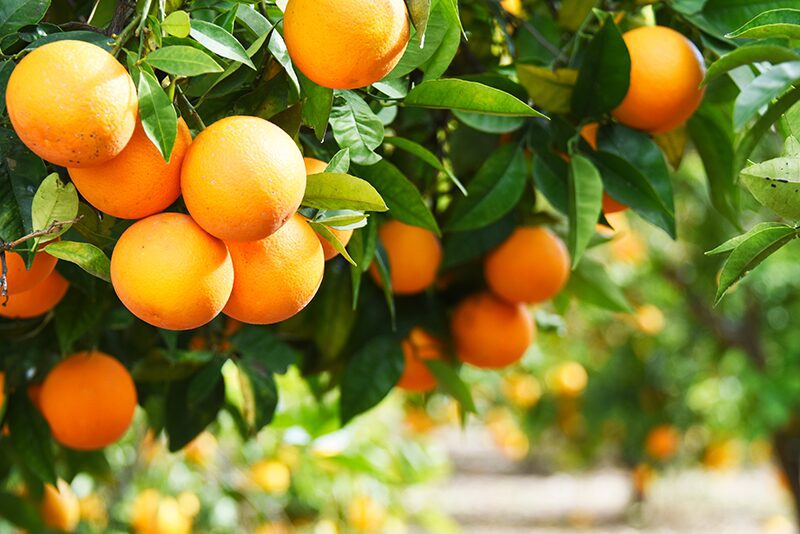
Bare root fruit trees are young trees that are sold without soil around their roots. Instead, their roots are carefully packaged and kept moist until you’re ready to plant them. This type of packaging helps reduce the risk of transplant shock and makes them easier to transport.
When selecting a bare-root tree, look for one with a healthy root system and well-pruned branches. Avoid trees with dry or damaged roots. It’s also important to choose a tree variety that is suitable for your climate and soil conditions.
The ideal time to plant bare root fruit trees is during the dormant season, which is typically in early spring before new growth begins. Make sure to check the specific recommendations for your tree variety, as planting times may vary.
How do I plant my bare-root tree?: Step-by-Step Guide to Planting
Follow these steps for a successful planting process:
- Choose the Right Bare Root Tree
Select a tree that suits your preferences and climate. Consider factors such as fruit type, size, and flavor, as well as the tree’s pollination requirements.

- Prepare the Planting Site
Find a sunny location in your yard with well-draining soil. Clear the area of any weeds or grass, ensuring that the tree will have plenty of space to grow.
- Step 3: Planting and Watering
Soak the roots in water for about 8 to 12 hours before planting. This rehydrates the tree and prepares it for planting.
Then, dig the planting hole twice as wide as the root system. The hole should be deep enough to accommodate the roots without bending or crowding them.
Before adding soil, make sure to check your soil health to ensure your trees are getting the proper nutrients they need. Then mix in compost, native soil, and transplant fertilizer to create a nutrient-rich planting mix. This will give your tree a great start.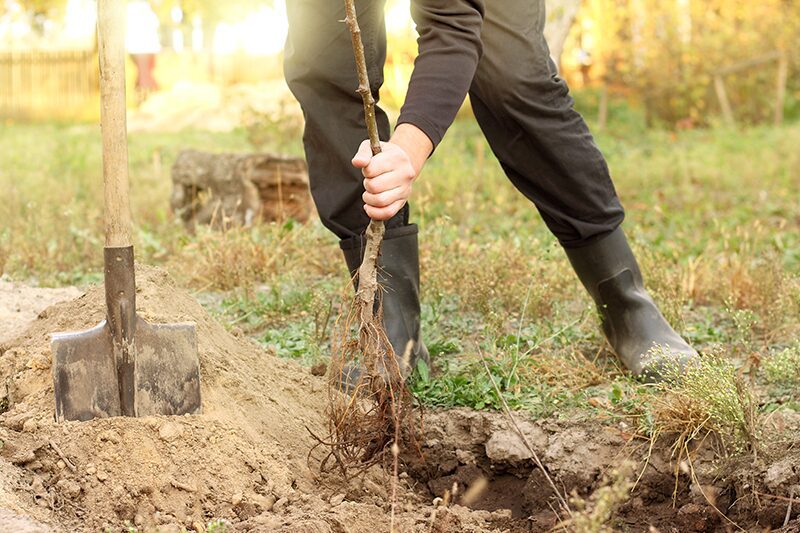
Post-Planting Tree Care
Once you’ve planted your bare-root fruit tree, it’s time to give it the love and care it deserves to thrive in its new home.
Staking Your Trees

One crucial step is providing proper support to prevent the tree from bending or breaking in strong winds. Staking your tree is a simple yet effective solution. Use sturdy stakes and secure them to the trunk with VELCRO® Brand Tree Ties. They are a durable and adjustable solution, allowing you to accommodate the growth of the tree over time.
Watering

Watering is another essential aspect of post-planting care. After planting, give your tree a deep watering to ensure the roots receive ample moisture. As the tree establishes, continue to water it regularly, especially during dry periods. Adequate hydration is crucial for healthy growth and fruit production.
Make sure to keep a watchful eye on your tree for any signs of pests or diseases. Regularly inspect the leaves, branches, and trunk for any unusual spots, holes, or pests. If you notice any issues, take appropriate action promptly. This can involve using organic pest control methods or seeking advice from a professional arborist or gardening expert.
Pruning
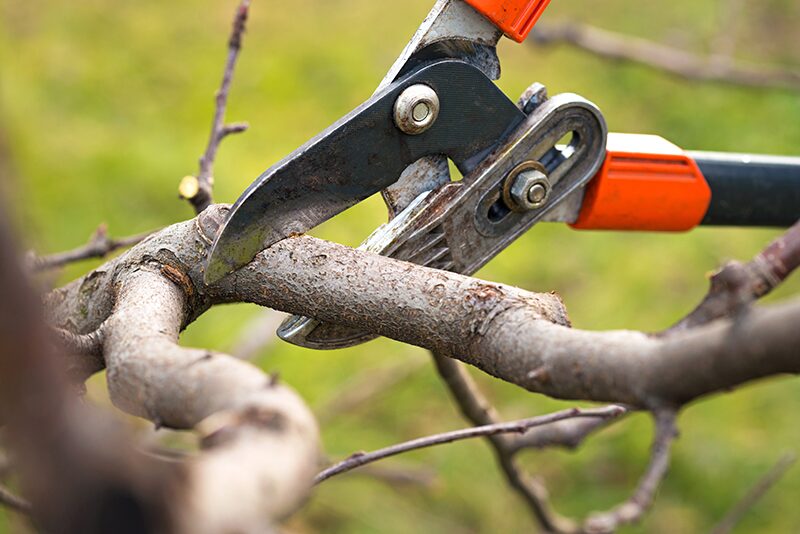
It plays a crucial role in maintaining the shape and health of your fruit tree. Follow the specific recommendations for your tree’s variety and shape, ensuring proper air circulation and balanced growth. Pruning helps remove dead or damaged branches, encourages fruiting, and shapes the tree to your desired form. It’s best to prune during the dormant season, before new growth begins.
By following these simple steps and providing your bare-root fruit tree with the care it needs, you’ll be well on your way to enjoying a fruitful harvest in the years to come.
So, what are you waiting for? Grab your gardening gloves and get ready to plant those bare root fruit trees like a pro. With a little patience and TLC, you’ll soon have a beautiful and productive addition to your garden that will provide you with a bounty of fresh fruits. Happy planting!
